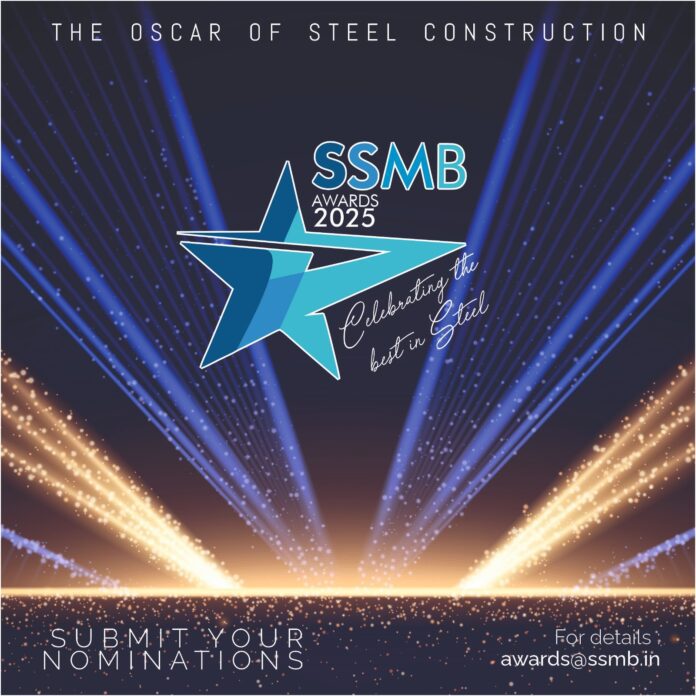Intro: In the evolving narrative of Indian cities, few projects have managed to strike a balance between environmental responsibility, social inclusivity, and architectural excellence. Central Square, a pioneering mixed-use development 3.5 Lac Sqft Built up area designed by De:cape Studio under the leadership of Architect Gaurav & Anamika Gupta, does exactly that.
Located in a dense urban context, the project integrates steel innovation, sustainable strategies, and community-focused planning to create a vibrant urban hub that is as environmentally conscious as it is socially engaging. From rooftop gardens that combat heat islands to energy-efficient façades and water recycling systems, Central Square represents a holistic vision of civic infrastructure for the 21st century.
DESIGN PHILOSOPHY ROOTED IN SUSTAINABILITY
The guiding vision for Central Square was clear from the outset: to create a vibrant, sustainable, and inclusive development that sets new precedents for mixed-use civic spaces in India. Sustainability was not an afterthought, it shaped every major design decision, from site orientation and material selection to energy use and water management. The project is on track to achieve both IGBC and GRIHA green building ratings, underscoring its commitment to measurable environmental performance.
“We envisioned Central Square as a civic space that gives back socially, environmentally, and experientially.”
GAURAV GUPTA, Principal Architect & Urban Planner, Founder De:cape Studio
ANAMIKA GUPTA, Principal Architect, Co-Founder De:cape Studio
ENABLER OF DESIGN FREEDOM
Steel has been used extensively in Central Square’s façade, rooftop canopies, cantilevered swimming pool, mechanised car parking, and other key structural components. Working in tandem with RCC and pre-stressed cable systems, steel has allowed the design team to achieve structural agility, faster construction, and long-span flexibility, the qualities essential for a mixed-use project with complex spatial demands. The integration of steel has also reduced material wastage and streamlined the construction process, aligning with the project’s sustainability goals.
GREEN SPACES AS URBAN OASES
Central Square’s green strategy is visible in every corner: landscaped courtyards, rooftop cafés with terrace gardens, and bio-diverse planting zones have been woven into the architectural program. These spaces serve a dual purpose, improving air quality and offering restorative environments for people. Native, locally sourced plant species have been chosen for their low-water requirements and ecological resilience, ensuring that green areas remain sustainable over time.
Green Space Benefits
- Reduces urban heat island effect
- Promotes biodiversity in urban environments
- Enhances mental wellbeing for users
- Creates natural social gathering points
CLOSING THE LOOPS
The project embraces a closed-loop philosophy for resource management.
- Energy Efficiency: Argon gas-filled double-glazed units reduce heat gain, foam concrete on rooftops minimizes heat absorption, and solar panels generate clean electricity for common areas.
- Water Conservation: Rainwater harvesting, greywater reuse, and STP recycling systems reduce freshwater demand for flushing, landscaping, and sanitation.
- Waste Management: On-site grease separators process food waste into biodegradable compost, STP sludge is used as plant nutrient, and recharge pits restore groundwater.
Central Square’s Green Credentials
- GRIHA certification
- Rooftop solar power for common areas
- Rainwater harvesting & greywater recycling
- Locally sourced, low-carbon materials
- Biodiverse native plant landscaping
- High-performance glazing & passive cooling
SOCIAL INCLUSIVITY & CIVIC IDENTITY
While environmental sustainability anchors the project, Central Square is equally a social infrastructure catalyst. Thoughtfully designed public areas like kids’ play zones, open-air theatres, and shaded walkways encourage multi-generational interaction. The ground plane and circulation design ensure accessibility for all age groups and abilities, making the development a true community hub. The mixed-use program including commercial, hospitality, and civic ensures that the site remains active throughout the day and evening, fostering safety, vibrancy, and economic vitality.
“Green buildings must also be socially green, places where people connect, exchange, and feel they belong.”
OVERCOMING URBAN CHALLENGES
The site’s urban density and ecological sensitivity posed design and execution challenges. The team responded with passive ventilation strategies, solar shading devices, efficient waste management systems, and a construction process that minimized site disruption. The integration of mechanized parking solutions optimized space usage without compromising landscaped areas or circulation paths.
Why It Matters?
Central Square offers a replicable model for green and inclusive urban development. It demonstrates that sustainability is not a premium add-on, but a foundational design driver. By integrating steel engineering efficiency, ecological responsibility, and social vitality, Central Square is more than a building. It is a blueprint for the future of civic infrastructure in India. Projects like this push the discourse from “green certification” to green living, ensuring that cities grow without losing their ecological or human balance.




